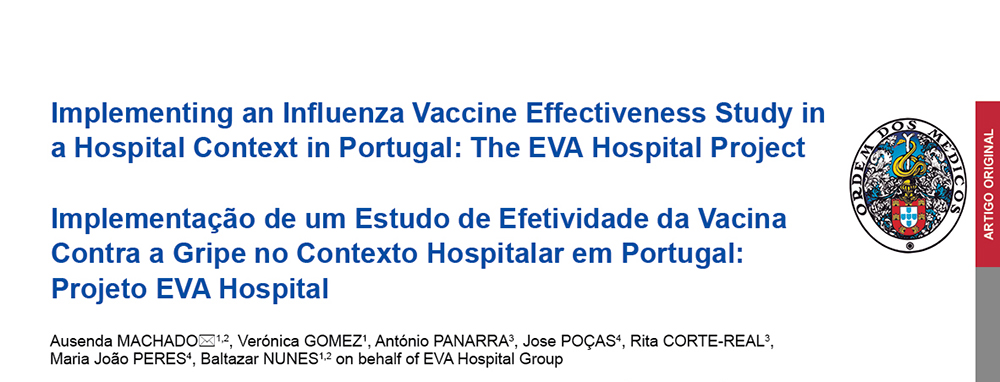SOCIAL MEDIA
Portuguese Medical Association's Scientific Journal

Introduction: The project ‘Integrated Monitoring of Vaccines in Europe’ aimed to measure seasonal influenza vaccine effectiveness against hospitalised adults, aged 65 years and over, with influenza. We describe the protocol implementation in Portugal.
Material and Methods: We implemented a test-negative design, targeting community-dwelling patients aged 65 years old and over hospitalised with severe acute respiratory illness. Patients were reverse transverse-polymerase chain reaction tested for influenza. Cases were those positive for influenza while others were controls. Most variables were collected using hospital medical records. Selection bias was evaluated by comparison with the laboratory influenza test requests database according to demographic characteristics. Crude, season-adjusted influenza vaccine effectiveness was estimated as = 1 – odds ratio, and 95% confidence intervals were obtained by conditional logistical regression, matched with the disease onset month.
Results: The recruitment rate was 37.8%. Most participants (n = 368) were female (55.8%) and aged 80 years old and over (55.8%). This was similar to values for potentially eligible severe acute respiratory illness patients (80 years old and over: 56.8%, female: 56.2%). The proportion of missing values was below 2.5% for 20 variables and above 5% (maximum 11.6%) for six variables. Influenza vaccine effectiveness estimates were 62.1% against AH1pdm09 (95% confidence intervals: -28.1 to 88.8), 14.9% against A(H3N2) (95% confidence intervals: -69.6 to 57.3), 43.6% against B/Yam (95% confidence intervals: -66.2 to 80.8).
Discussion: Given the non-existence of a coded admission database in either participating hospital the selection of severe acute respiratory illness due to clinical features was the feasible one. These results are only valid for the older adult population residing in the catchment area of the two participating hospitals who were admitted to a public hospital with severe influenza or SARI symptoms.
Conclusion: Despite the low participation rate, we observed comparable characteristics of participants and eligible severe acute respiratory illness patients. Data quality was high, and influenza vaccine effectiveness results were in accordance with the results of meta-analyses and European season-specific estimates. The final sample size was low, which inhibited obtaining estimates with good precision.